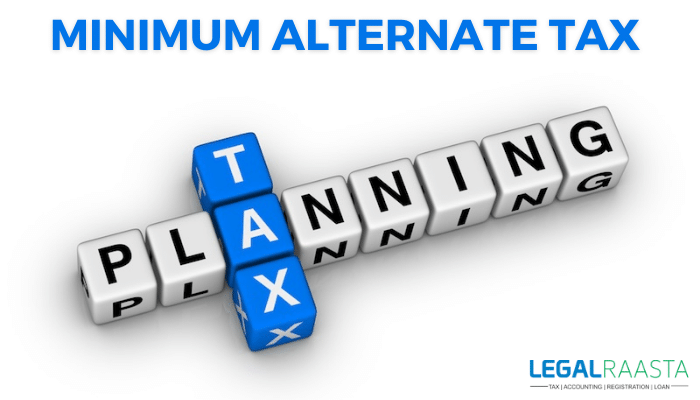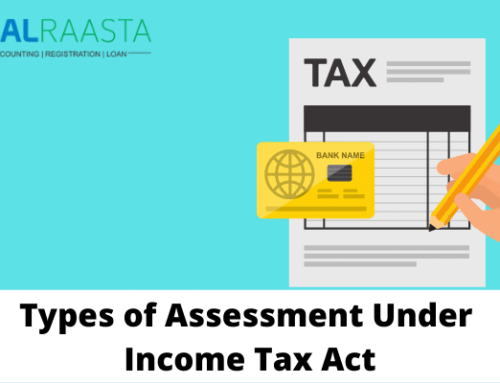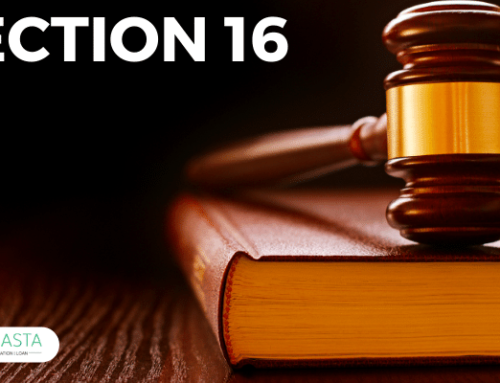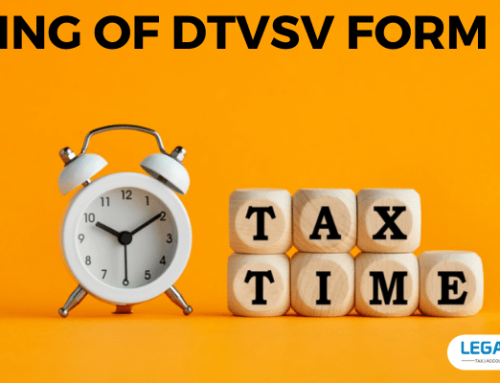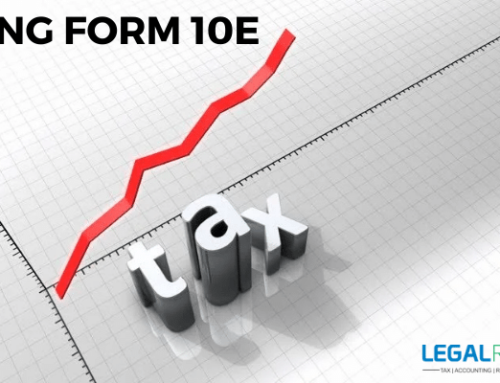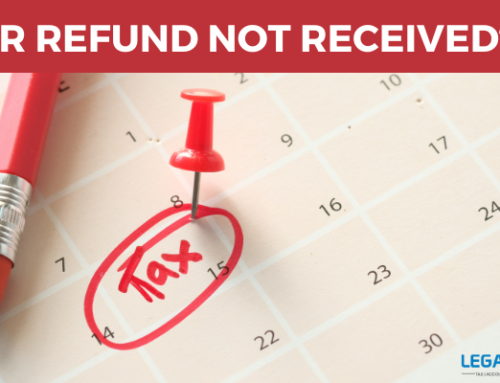MAT stands for Minimum Alternate Tax, and it was created to close (if not completely close) the gap between tax liability and book profits. Let’s look at how MAT tax planning works in this article.
Minimum Alternate Tax (MAT) – A Brief Introduction
Contents
- Minimum Alternate Tax (MAT) – A Brief Introduction
- How to calculate Minimum Alternate Tax (MAT)?
- Increases in Net Profit (If debited to the Profit and Loss Account)
- Deductions from Net Profit (If credited to the Profit and Loss Account)
- What is Minimum Alternate Tax (MAT) Credit?
- Frequently Asked Questions
The Income Tax Act imposes a Minimum Alternative Tax. The MAT concept was created to target firms that produce large profits and pay dividends to their shareholders, but pay no or little tax under the standard terms of the Income Tax Act by utilizing the many deductions and exemptions available.
However, since the implementation of MAT, businesses have been required to pay a specified percentage of their profits as Minimum Alternate Tax. MAT is applicable to all businesses, including international businesses. Section 115JB of the Income Tax Act is used to calculate MAT.
Every business shall pay the larger of the two taxes determined as follows:
- Tax liability under the Income Tax Act’s normal provisions (tax rate 30% plus 4% Edu. cess plus surcharge) (if applicable)
Domestic corporations with a turnover or gross revenues of up to Rs. 400 crore has a tax liability of 25% + 4% cess and relevant surcharge under the normal provisions of the Income Tax Act.
- Tax liability under the MAT provisions is outlined in Sec 115JB (the tax rate is 15% off Book Profits + 4% education cess plus a surcharge, if appropriate, beginning in AY 2020-21 (FY 2019-20)).
MAT rates were 18.5 percent prior to FY 2019-20.
How to calculate Minimum Alternate Tax (MAT)?
With effect from AY 2020-21, MAT is equal to 15% of Book profits (it was 18.5 percent previous to AY 2020-21). (Plus Surcharge and cess as applicable).
Book profit refers to the net profit displayed in the profit and loss account for the year, as adjusted for the following items:
Increases in Net Profit (If debited to the Profit and Loss Account)
- Income tax paid or payable, if any, calculated according to the income tax act’s customary rules.
- Any reserve is transferred.
- Proposed or paid dividend
- Provision for the failure of subsidiaries
- Depreciation, including depreciation due to asset revaluation
- Deferred tax amount/provision
- Make preparation for unknown obligations, such as bad loans.
- Amount of expense related to exempt income under sections 10,11, and 12 (excluding secs 10AA and 10B) (38) This means that MAT applies to income under section 10AA and long-term capital gains excluded under section 10(38). Any asset’s value is depreciated, and a provision is made for this.
Deductions from Net Profit (If credited to the Profit and Loss Account)
- The amount is taken out of any reserves or provisions.
- The amount of income that is subject to any of the provisions of sections 10, 11, and 12, with the exception of 10AA and 10(38).
- Amount took from the revaluation reserve and credited to the profit and loss account for depreciation on asset revaluation.
- In accordance with the books of account, the amount of loss carried forward or unabsorbed depreciation, whichever is less. Depreciation, on the other hand, is excluded from the loss. (Nothing shall be deducted if the loss pushed forward or unabsorbed depreciation is nil.)
- A deferred Tax Amount is any amount that is credited to the profit and loss account.
- The amount of depreciation that has been charged to the Profit and Loss Account (excluding the depreciation on revaluation of Assets)
What is Minimum Alternate Tax (MAT) Credit?
When a firm pays any amount of tax as MAT, it can claim a credit for the tax paid under section 115JAA.
Tax Credit Allowable: Tax paid according to the MAT formula — Income tax due under the standard provisions of the Income-tax Act of 1961.
The Department will not pay any interest on this tax credit.
For example, ABC Ltd has a taxable income of Rs 40 lakhs and book profits of Rs 75 lakhs for the fiscal year 2019-20, according to the standard rules of the Income Tax Act.
- The larger of the following two taxes will be due:
Rs. 30,00,000 multiplied by 30% plus 4% is Rs. 9,36,000
- The following is the tax due under the MAT provisions:
Rs 75,00,000 multiplied by 1518.5 percent plus 4% equals Rs 11,70,000.
- As a result, the corporation will owe Rs 11,70,000 in tax.
Rs 11,70,000 – Rs 9,36,000 = Rs 2,34,000 MAT Credit
Such tax credit may be carried forward for a period of 15 assessment years following the assessment year in which it became permissible.
This change will take effect in the 2018-19 academic year. Prior to this, MAT could only be carried forward for ten years.
For example, if an excess tax is paid in the fiscal year 2016-17, the credit for that tax can be carried forward to the fiscal year 2017-18. In a year when the tax becomes payable on the entire income in accordance with the Act’s customary rules, the MAT credit may be set off.
Set off is granted to the extent that the difference between the tax on total income under normal provisions and the tax that would have been due under MAT under section 115JB is less than the tax on total income under normal provisions. With the help of an illustration, the concept of MAT credit can be better understood.
So, with the help of an example, let’s try to comprehend it:
| Asst Year | Tax Payable under MAT | Tax Payable as per normal provisions | Actual Tax payable | Tax Credit Available u/s 115JAA | Tax Credit Set off/ adjusted | Total Tax Credit Available |
| 2012-13 | 8,00,000 | 5,00,000 | 8,00,000 | 3,00,000 | – | 3,00,000 |
| 2013-14 | 9,00,000 | 6,50,000 | 9,00,000 | 2,50,000 | – | 5,50,000 |
| 2014-15 | 10,00,000 | 7,00,000 | 10,00,000 | 3,00,000 | – | 8,50,000 |
| 2015-16 | 7,00,000 | 10,00,000 | 7,00,000 | – | 3,00,000 | 5,50,000 |
| 2016-17 | 6,00,000 | 11,00,000 | 6,00,000 | – | 5,00,000 | 50,000 |
- Actual tax payable is greater than the MAT tax payable or the tax payable under normal rules.
- Only if the tax payable under regular provisions is larger than the tax payable under MAT, and only to the extent of the difference between the two, is MAT credit set-off allowed.
- Section 115JAA MAT Credit: Tax Payable Under MAT — Tax Payable Under Normal Provisions
Frequently Asked Questions
Who can benefit from MAT?
MAT is applicable to all businesses, including international businesses.
What is the rate of taxation under section 115JB?
From FY 2019-20, i.e. AY 2020-21, the tax rate will be 15%.
Is it possible to carry a tax credit forward?
Such tax credit may be carried forward for a period of 15 assessment years following the assessment year in which it became permissible.
Read, also: A Comprehensive Guide to Income Tax Slabs in India
Charitable Trusts and NGO – Income Tax Benefits
Income Tax Rebate Under Section 87A

